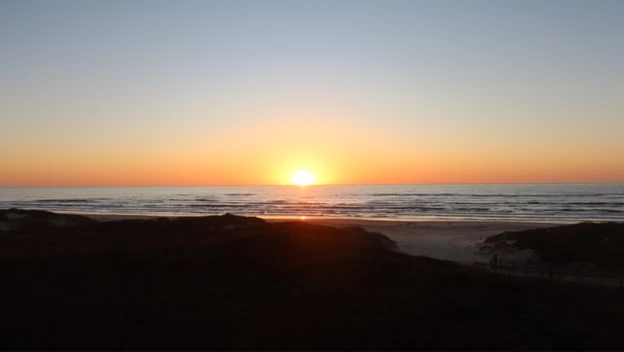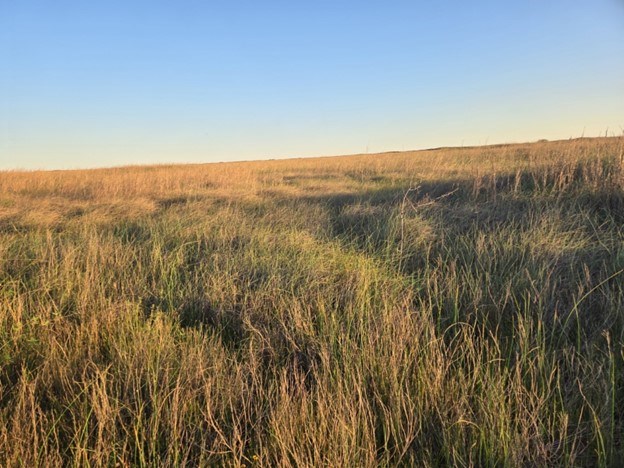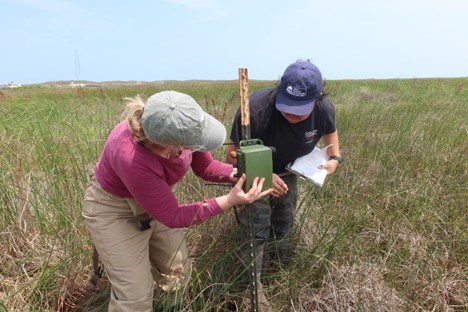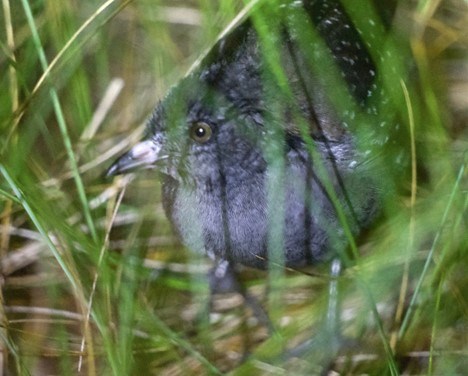Last updated: May 13, 2025
Article
Mysteries of the Eastern Black Rail: Species Inventory Informs Prescribed Fire Program at Padre Island National Seashore
By Summer Boulais, I&M Science Communicator
May 13, 2025
Hues of pink and orange paint the sky as the sun rises over Padre Island National Seashore (NS) off the coast of Texas. Park biologist, Charles Sassine, heads into the field on an early-morning mission to find a mysterious bird. He plays the distinctive “Kee-kee-JERR" sound recording in search of the eastern black rail (Laterallus jamaicensis jamaicensis). A response echoes the call, sparking the biologist’s excitement at locating the secretive bird. Sassine’s heart pounds with anticipation as he turns to look where the call was coming from. He notices something crouching in the shadows, but he sees fur rather than feathers... A coyote is mimicking the call of an eastern black rail, a trick Sassine has never experienced before!
May 13, 2025
Hues of pink and orange paint the sky as the sun rises over Padre Island National Seashore (NS) off the coast of Texas. Park biologist, Charles Sassine, heads into the field on an early-morning mission to find a mysterious bird. He plays the distinctive “Kee-kee-JERR" sound recording in search of the eastern black rail (Laterallus jamaicensis jamaicensis). A response echoes the call, sparking the biologist’s excitement at locating the secretive bird. Sassine’s heart pounds with anticipation as he turns to look where the call was coming from. He notices something crouching in the shadows, but he sees fur rather than feathers... A coyote is mimicking the call of an eastern black rail, a trick Sassine has never experienced before!

NPS/Charles Sassine
Continuing the Search
While Sassine didn’t find an eastern black rail that morning, the search for this secretive bird in the park continues. As a federally threatened species with declining populations, effective habitat management and monitoring of them is vital. Padre Island NS staff collaborated with the National Park Service’s Inventory and Monitoring Division and other researchers, such as Dr. Chris Butler from Texas A&M University, to survey eastern black rails’ presence and distribution in the park. This inventory is crucial for park managers to assess how prescribed burn plans might impact the species. Prescribed fire is particularly useful for managing the spread of woody vegetation, a habitat type that eastern black rails tend to avoid. Discovering where these birds reside can help park managers maintain suitable habitats for them.
NPS/Christopher Butler

NPS/Charles Sassine
Challenging Field Days
Little is known about the eastern black rail due to their secretive behavior, making this species particularly hard to monitor. They are a crepuscular species which means they are most active before sunrise and after sunset. Biologists battled swarms of mosquitos before dawn in search of these little birds. They used the call-playback survey method through playing bird calls via speakers and documenting the birds’ responses. Other field days featured researchers heading out on boats to remote parts of the coastal wetlands. They set up Autonomous Recording Units (ARUs) to gather acoustic data, paired with trail cameras designed to take pictures triggered by motion. Lastly, biologists measured the amount of vegetation and water levels at these survey points.
NPS/Tabitha Olsen
Confirming Success
The biologists’ hard work was rewarded when they confirmed that the eastern black rail was present in Padre Island NS. The call-playback surveys detected the birds at eight locations within the park. This served as the most effective survey method since the ARUs detected only one black rail, and the trail cameras captured none. These birds are very camera shy! They like to hide in thick vegetation to obscure themselves from predators. Survey points mainly consisted of wetland plants, but managing encroaching woody vegetation would help preserve and expand their habitat.The black rail has a safe refuge here at Padre Island National Seashore.
